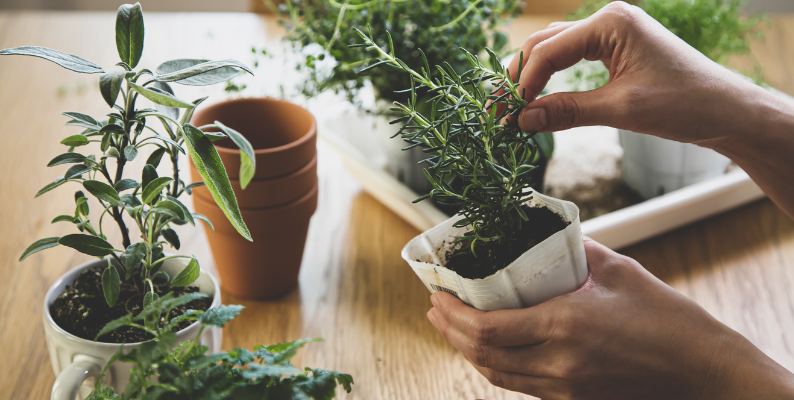
With a bit of space and some nurturing, you can cultivate a medicinal herb garden right in your backyard. Here are my top ten easy-to-grow medicinal herbs
1. Thyme
-
- Germination or Buying Starts: Thyme is easily propagated from cuttings or purchased as young plants from a nursery. Seeds can also be sown indoors before the last frost but do require grow lights and careful tending. I reccomend starts for thyme for less effort.
- Growing Needs: Thriving in well-drained soil and full sunlight, thyme is a drought-tolerant herb that prefers slightly dry conditions. Its low-growing habit makes it suitable for containers or edging.
- Medicinal Uses: Rich in antioxidants and antimicrobial compounds, thyme is often used to relieve respiratory issues like coughs and sore throats. It also aids digestion and has topical antiseptic properties.
- Harvesting: Trim thyme stems as needed throughout the growing season, but avoid over-harvesting to ensure continued growth.
2. Calendula
-
- Germination or Buying Starts: Calendula is grown from seeds or purchased as young plants. It readily self-seeds, making it a perennial fixture in the garden.
- Growing Needs: Thriving in well-drained soil and full sunlight, calendula tolerates some shade but prefers sunny spots. Regular deadheading encourages prolonged blooming.
- Medicinal Uses: Calendula’s anti-inflammatory and antiseptic properties make it ideal for treating minor wounds, rashes, and skin irritations. It’s also used in herbal teas and infusions to support digestive health.
- Harvesting: Harvest fresh calendula flowers as they bloom, and dry them for later use in teas, salves, or tinctures.
3. Lemon Balm
-
- Germination or Buying Starts: Lemon balm is easily propagated from cuttings or purchased as young plants. It thrives in containers or garden beds with well-drained soil.
- Growing Needs: Preferring rich, moist soil and partial to full sunlight, lemon balm is a vigorous grower that benefits from regular pruning to control its spread.
- Medicinal Uses: Lemon balm’s calming properties make it a popular choice for relieving anxiety, stress, and insomnia. It also aids digestion and soothes headaches.
- Harvesting: Harvest lemon balm leaves throughout the growing season, using them fresh or dried for teas, infused oils, or herbal baths.
4. Motherwort
-
- Germination or Buying Starts: Motherwort is typically started from seeds or purchased as young plants. It’s a hardy perennial that thrives in various soil types and light conditions.
- Growing Needs: Tolerant of poor soil and partial shade, motherwort is an adaptable herb that requires minimal maintenance once established.
- Medicinal Uses: Motherwort is prized for its calming effects on the nervous system, making it useful for anxiety, nervousness, and heart palpitations. It also supports uterine health and menstrual irregularities.
- Harvesting: Harvest motherwort leaves and flowers throughout the growing season, drying them for use in teas or tinctures.
5. California Poppy
-
- Germination or Buying Starts: California poppy is grown from seeds or purchased as young plants. It thrives in well-drained soil and full sunlight.
- Growing Needs: Easy to cultivate, California poppy tolerates poor soil and drought conditions. It self-sows readily, producing cheerful blooms in various colors.
- Medicinal Uses: California poppy is valued for its sedative and analgesic properties, making it a gentle remedy for anxiety, insomnia, and pain relief. It’s also used to support relaxation and ease tension.
- Harvesting: Harvest California poppy flowers as they bloom, drying them for teas or tinctures.
6. Holy Basil
-
- Germination or Buying Starts: Holy basil is started from seeds or purchased as young plants. It prefers well-drained soil and full sunlight, thriving in warm climates.
- Growing Needs: Adapted to tropical regions, holy basil thrives in rich, moist soil and warm temperatures. It benefits from regular pruning to encourage bushy growth.
- Medicinal Uses: Holy basil, or tulsi, is revered for its adaptogenic properties, which help the body cope with stress and promote overall well-being. It’s also used to support immune function and relieve respiratory issues.
- Harvesting: Harvest holy basil leaves and flowers throughout the growing season, drying them for teas or making fresh herbal preparations.
7. Chamomile
-
- Germination or Buying Starts: Chamomile is grown from seeds or purchased as young plants. It thrives in well-drained soil and full sunlight.
- Growing Needs: Easy to grow, chamomile prefers slightly acidic soil and tolerates drought conditions once established. Regular deadheading encourages continuous blooming.
- Medicinal Uses: Chamomile is renowned for its calming and anti-inflammatory properties, making it a popular remedy for anxiety, insomnia, and digestive issues. It’s also used topically to soothe skin irritations.
- Harvesting: Harvest chamomile flowers as they fully open, drying them for teas or infused oils.
8. Catnip
-
- Germination or Buying Starts: Catnip is easily grown from seeds or purchased as young plants. It thrives in well-drained soil and full sunlight.
- Growing Needs: Hardy and adaptable, catnip tolerates various soil types and light conditions. It’s a vigorous grower that benefits from regular pruning to prevent legginess.
- Medicinal Uses: Catnip is valued for its calming effects on the nervous system, making it useful for anxiety, insomnia, and digestive issues. It’s also used to repel insects and soothe minor skin irritations.
- Harvesting: Harvest catnip leaves and flowers throughout the growing season, drying them for teas or tinctures.
9. Borage
-
- Germination or Buying Starts: Borage is grown from seeds or purchased as young plants. It thrives in well-drained soil and full sunlight.
- Growing Needs: Resilient and low-maintenance, borage tolerates poor soil and drought conditions. It self-seeds readily, producing clusters of star-shaped blue flowers.
- Medicinal Uses: Borage is prized for its anti-inflammatory properties and high levels of gamma-linolenic acid (GLA), which support skin health and reduce inflammation. It’s also used to promote diuresis and relieve respiratory issues.
- Harvesting: Harvest borage leaves and flowers throughout the growing season, using them fresh in salads or drying them for teas.
10. Rosemary
-
- Germination or Buying Starts: Rosemary is propagated from cuttings or purchased as young plants. It thrives in well-drained soil and full sunlight.
- Growing Needs: Drought-tolerant and aromatic, rosemary prefers slightly alkaline soil and ample sunlight. It’s an excellent choice for borders or container gardens.
- Medicinal Uses: Rosemary boasts antioxidant and anti-inflammatory properties, aiding digestion, improving memory, and supporting circulation. It’s also used topically to stimulate hair growth and relieve muscle pain.
- Harvesting: Trim rosemary sprigs as needed, ensuring not to strip the plant entirely. Regular pruning encourages bushy growth and helps maintain its shape.



